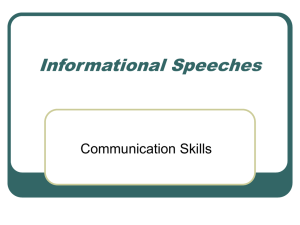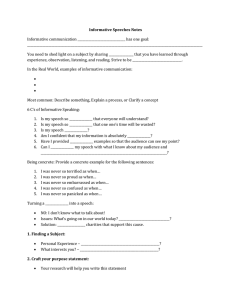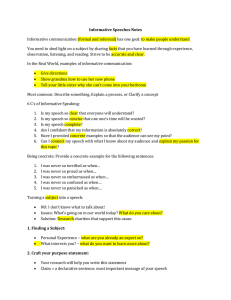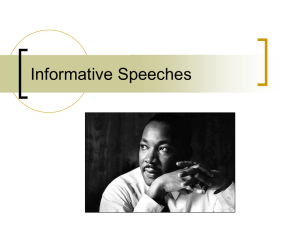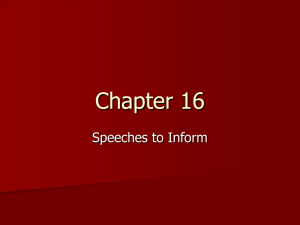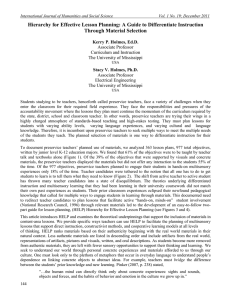Informative Speech Notes - Community Unit School District 200
advertisement
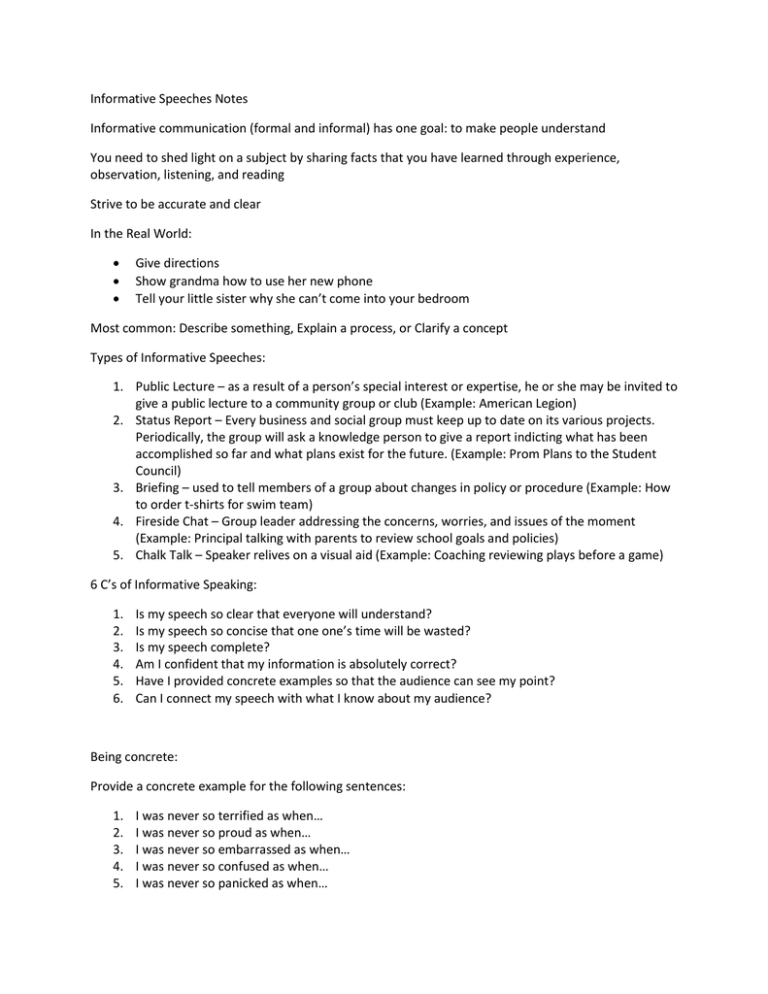
Informative Speeches Notes Informative communication (formal and informal) has one goal: to make people understand You need to shed light on a subject by sharing facts that you have learned through experience, observation, listening, and reading Strive to be accurate and clear In the Real World: Give directions Show grandma how to use her new phone Tell your little sister why she can’t come into your bedroom Most common: Describe something, Explain a process, or Clarify a concept Types of Informative Speeches: 1. Public Lecture – as a result of a person’s special interest or expertise, he or she may be invited to give a public lecture to a community group or club (Example: American Legion) 2. Status Report – Every business and social group must keep up to date on its various projects. Periodically, the group will ask a knowledge person to give a report indicting what has been accomplished so far and what plans exist for the future. (Example: Prom Plans to the Student Council) 3. Briefing – used to tell members of a group about changes in policy or procedure (Example: How to order t-shirts for swim team) 4. Fireside Chat – Group leader addressing the concerns, worries, and issues of the moment (Example: Principal talking with parents to review school goals and policies) 5. Chalk Talk – Speaker relives on a visual aid (Example: Coaching reviewing plays before a game) 6 C’s of Informative Speaking: 1. 2. 3. 4. 5. 6. Is my speech so clear that everyone will understand? Is my speech so concise that one one’s time will be wasted? Is my speech complete? Am I confident that my information is absolutely correct? Have I provided concrete examples so that the audience can see my point? Can I connect my speech with what I know about my audience? Being concrete: Provide a concrete example for the following sentences: 1. 2. 3. 4. 5. I was never so terrified as when… I was never so proud as when… I was never so embarrassed as when… I was never so confused as when… I was never so panicked as when… Turning a subject into a speech: NO: I don’t know what to talk about! Issues: Connecting the facts together so they don’t seem random or like a long list Solution: Think outside of the box! Be Creative! 1. Finding a Subject: Personal Experience – what are you already an expert on? What interests you? – what do you want to learn more about? 2. Narrow Your Subject: Narrowing your topic makes it more manageable and focused o Limit your subject in time (Example: Cost of presidential elections – Pick 1 month during 2000 campaign) o Limit your subject in space (Example: Recycling efforts – Pick Wheaton Community) o Limit your subject in extent (Example: Well balanced diet – Pick one element like Fiber) o Limit your subject using principle of divide and conquer (Sherlock Holmes – Sherlock Holmes’ sense of smell) 3. Craft your purpose statement: Your research will help you write this statement Thesis = a declarative sentence; most important message of your speech o (Teenagers and fads) The slang teenagers use often comes from the latest popular movies 4. Support your purpose statement: Facts – make sure they are true, actual, real Statistics – make them audience friendly (… that’s about the size of an elephant.) Story Quotes Define your terms Descriptions 5. Weave your support: Add creditability Easy for the audience to follow along Delivery: Referring/Gesturing to the PowerPoint No podium: 1 Notecard or printed copy of powerpoint with notes
